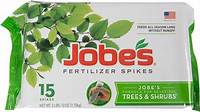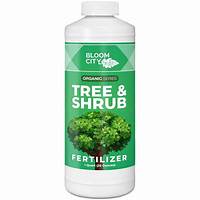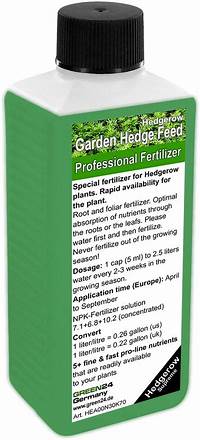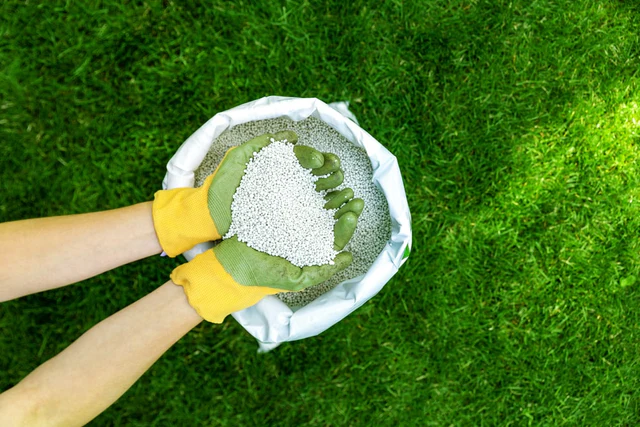Fertilizing Privet (Ligustrum): When and How to Do It Right
Privet is mainly planted as a hedge or topiary shrub because it responds very well to pruning. To help this semi-evergreen shrub recover from the loss of biomass due to trimming, it should be fertilized at least once a year. Here’s when and how to fertilize your privet for healthy growth.
Privet forms beautiful green walls and grows very quickly, so you won’t have to wait long for a dense, opaque hedge. Regular fertilization of freshly planted specimens will help speed up this process even more.
Contents
Key Points: How to Fertilize Privet Properly
To encourage vigorous growth and help the plant recover from regular pruning, privet should be fertilized consistently from the beginning.
- In March, apply a mix of mature compost and horn shavings to ensure a solid nutrient base.
- Recommended dosage: 3 liters of compost and 100 grams of horn shavings per square meter.
- Pay special attention to nitrogen, the key nutrient that promotes plant growth.
Basic Fertilization with Compost and Horn Shavings
A mixture of well-rotted compost and horn shavings is ideal for supplying the necessary nutrients. Horn shavings are rich in nitrogen, which is essential for leaf and shoot development.
- Mix compost and horn shavings thoroughly in a bucket or wheelbarrow.
- In March, spread about 3 liters of compost and 100 grams of horn shavings per m².
- This helps hedge plants like privet tolerate regular trimming and form dense, vigorous growth.
Nutrient Deficiency Caused by Bark Mulch
Young privet hedges that have been mulched often develop yellowing leaves and show little growth. This is usually caused by a nitrogen tie-up in the soil:
- Bark mulch is low in nitrogen, and when it begins to decompose, microorganisms take nitrogen from the soil.
- This leads to competition for nitrogen between microbes and plant roots.
To avoid this:
- Apply the basic fertilizer before adding mulch.
- Use bark compost instead of fresh bark mulch—it’s more decomposed and ties up less nitrogen.
Lime Your Privet If Necessary
Although privet is adaptable to different soil pH levels, it thrives better in alkaline (chalky) soils than in acidic ones.
- Don’t lime the soil blindly—first test the pH using a soil test kit.
- If the pH is below 6.0 on sandy soils or below 6.5 on loamy soils, apply calcium carbonate lime in autumn or winter.
- Follow dosage instructions on the lime product packaging, as it depends on the lime content of the product used.
Cutting Back Privet: Start Early and Be Bold
Many inexperienced gardeners hesitate to prune their newly planted privet hedge heavily. However, a strong pruning from the start is essential for dense growth.
- Don’t be afraid to cut back one-third to one-half of the shoot length right after planting.
- Though you lose some height temporarily, it will be quickly regained with vigorous new growth.
- Privet as hedge
- Privet as topiary
- Pruning techniques
- Growth results
The takeaway: Regular and proper pruning leads to fuller, healthier hedges.
The best fertilizer for privet (Ligustrum) is one that promotes vigorous, leafy growth and helps the plant recover from regular pruning. Because privet grows quickly and is often used for hedges, it needs nutrients that support both root and shoot development.
Top Fertilizer Options for Privet
1. Organic Fertilizer: Compost + Horn Shavings (Hornspäne)
- Best for: Long-term, slow-release nutrition
- Why it’s great:
- Compost provides a balanced range of nutrients and improves soil structure.
- Horn shavings are high in nitrogen, which is essential for leafy growth.
- How to use:
- Mix 3 liters of compost + 100 grams of horn shavings per square meter.
- Apply once a year in early spring (March).
2. Balanced Granular Fertilizer (NPK 10-10-10 or similar)
- Best for: Quick, even nutrient delivery
- Why it’s great:
- Contains equal parts nitrogen (N) for leaf growth, phosphorus (P) for roots, and potassium (K) for overall plant health.
- How to use:
- Apply in early spring and again in mid-summer, following package instructions.
3. Slow-Release Nitrogen Fertilizer
- Best for: Boosting lush, green foliage
- Why it’s great:
- Ensures a steady supply of nitrogen over several months.
- How to use:
- Ideal if you don’t want to fertilize multiple times a year.
Avoid:
- Fresh bark mulch without prior fertilization – it can rob nitrogen from the soil.
- High-phosphorus fertilizers (like bloom boosters) – they’re not necessary for non-flowering hedge plants.
Bonus Tip:
Test your soil’s pH before applying lime. Privet prefers slightly alkaline soil, but over-liming without a soil test can cause nutrient imbalance.
To ensure your privet hedge thrives, it’s essential to provide it with the appropriate nutrients. Privet hedges benefit from balanced fertilizers that promote healthy foliage and robust growth. Here are some top-rated fertilizers available on Amazon suitable for privet hedges:
Espoma Organic Evergreen-Tone 4-3-4 Fertilizer
This natural and organic fertilizer is formulated for evergreen trees and shrubs, providing balanced nutrients to promote vibrant foliage

Grow More 20-20-20 Water Soluble Fertilizer
A versatile, all-purpose fertilizer suitable for various plants, including privet hedges. Its balanced NPK ratio supports overall plant health and growth.

Jobe’s Tree & Shrub Fertilizer Spikes
These slow-release spikes provide continuous nutrients directly to the root zone, promoting healthy growth and lush foliage.

Bloom City’s Tree & Shrub Fertilizer

Made with organic ingredients like wild Atlantic kelp and fish bone meal, this fertilizer supports robust growth in trees and shrubs.
GREEN24 Garden Hedge Plant Food
A liquid fertilizer specifically designed for hedges, providing essential nutrients for optimal growth and health.

When selecting a fertilizer, consider factors such as the specific nutrient requirements of your privet hedge, the soil conditions, and the desired growth rate. Always follow the manufacturer’s instructions for application rates and frequency to avoid over-fertilization.


